Blog
Our Bold & Weird Predictions for the 2022 Season
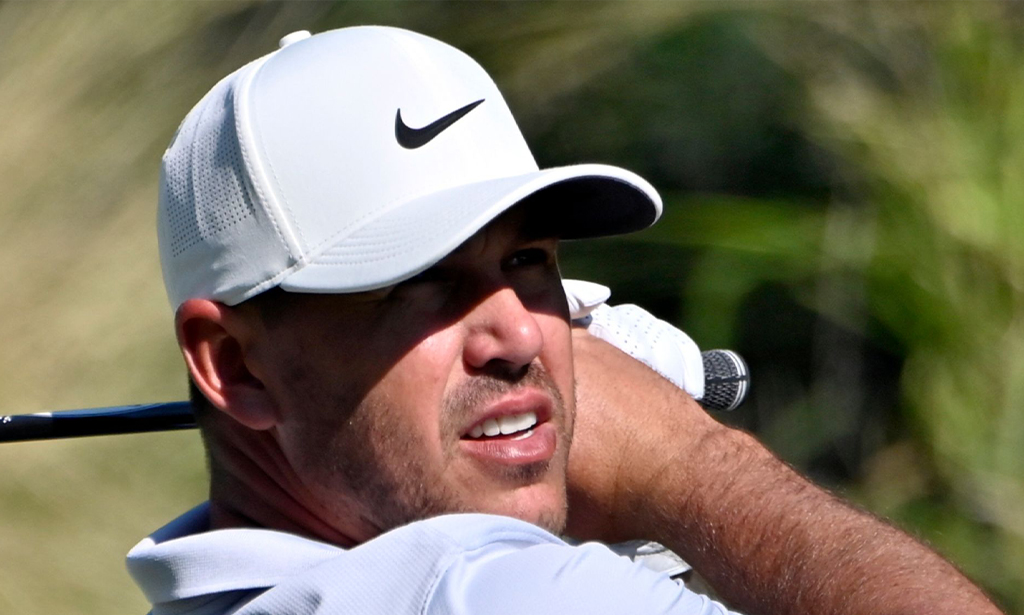
If you’d told me at the beginning of 2021 that Phil Mickelson would win more majors than Justin Thomas, Dustin Johnson, Bryson DeChambeau, Rory McIlroy and Brooks Koepka (as well as roughly 7.9 billion other people) combined, I’d have waved you off. Same if you’d told me that Tiger Woods wouldn’t play a single PGA Tour event, Bryson DeChambeau would contend in a Long Drive Championship, Patrick Reed wouldn’t make the U.S. Ryder Cup Team or that yelling “Brooksy” could get you ejected from East Lake.
What’s the point? The point is that plenty of weird stuff is going to happen this golf year. Some we’ve got a solid handle on. The rest we can only hope surprises us. So here are 22 predictions for the 2022 PGA Tour season, beginning with our safest, most concrete bets and then get increasingly more absurd.
1. The U.S. Team will win the Presidents Cup.
Let’s start on an extremely sturdy limb: Team USA will beat their International opponents in the Presidents Cup because they basically always do. And although their 2019 victory in Australia required a Sunday comeback, a burnt-out Royal Melbourne was decidedly unfriendly to the visiting American side. This year’s event at Quail Hollow should be better-suited for their big-stadium styles of play. Plus the U.S. has 12 players in the top 16 in the world. The International team has one.
That’s not to diminish the intriguing possibilities for the International side, though. Here’s how that team could look:
Louis Oosthuizen
Abraham Ancer
Hideki Matsuyama
Cameron Smith
Sungjae Im
Joaquin Niemann
Corey Conners
Mackenzie Hughes
Lucas Herbert
Adam Scott
Min Woo Lee
Carlos Ortiz
And that ignores plenty of intriguing candidates like Cameron Davis, Sebastian Munoz, Si Woo Kim, Garrick Higgo, Mito Pereira, Erik van Rooyen and others. But when you’re staring down a super-side on the U.S. Team, it’s tough to keep up regardless.
2. Tiger Woods will play a PGA Tour event.
Other than occasional paparazzi shots from doctors’ appointments, we’ll likely next see Woods in public at the Genesis Invitational in February, where he could return to the scene of his crash and turn the page, one year later. After that we should see Woods at the Players Championship for his World Golf Hall of Fame induction.
I doubt he’ll play before Augusta National, and even that could be a long shot. But if he continues to progress on his current schedule, we’re going to see Tiger Woods tee it up on the PGA Tour in 2022. Count on it.
3a. Tiger Woods will win the PIP.
Do we even know for sure that Woods hasn’t won the 2021 PIP, for that matter? Sure, Phil Mickelson has been talking a big game, but still…
Regardless, even if we see another Mickelson major run in 2022 (crosses fingers), if Woods plays even one event on the PGA Tour plus the new-fan-favorite PNC Championship, he’s got this one in the bag.
3b. You’ll start listening to the Drop Zone podcast more frequently.
Good news: Drop Zone stock is still available for a reasonable price. There’s room on the bandwagon. Check out the embedded pod below or on Apple or on Spotify to listen to our extremely fun gameified season preview, which includes several bold predictions and an all-new stock market golf game. We’re delighted to have you aboard!
4. We’re destined for some delicious hot-mic moments.
We’re approaching the one-year anniversary of Justin Thomas’ unfortunate hot-mic moment from last Tournament of Champions. We’ve just passed the two-year anniversary of Patrick Cantlay’s extremely entertaining hot-mic moment at the 2020 TOC. But this year? We’re getting more. That’s because we’re getting much more golf, period, thanks to the new ESPN+ deal which is revolutionizing PGA Tour Live, basically quadrupling the amount of streaming coverage and getting more cameras — and more microphones — on players when they might not quite expect it.
5. ESPN+ is going to rule.
It’s cheaper than the old PGA Tour Live. When you sign up, you get every other piece of ESPN+ content, too. The streams will show more groups, more players, more hours, and they’ll be synthesized like a broadcast, which should help pacing. Look, nobody is going to argue that Thursdays and Fridays on the PGA Tour are edge-of-your-seat television. But the core demographic of “yeah, lemme throw this on in the background at work and maybe bet on a few matchups while I’m at it” should find this change extremely satisfying.
6. The Genesis Scottish Open will be the schedule’s best addition.
It’s always been a joy to get a taste of ‘cross-the-pond golf in the lead-up to the Open Championship, but the crescendo will feel even better now that it’s official. The PGA Tour-European Tour (DP World Tour, we should say) Strategic Alliance has yielded something great: The Genesis Scottish Open, a PGA Tour event the week before the Open at St. Andrews. The final rounds will be broadcast on CBS and everything! Everybody loves to watch Scottish golf. Now we have more of it. Sure, next year we can get greedy about holding this event at a linksier course, but let’s take this step by step and celebrate the wins where they come.
7. Patrick Cantlay is going to win a major championship
We haven’t seen Cantlay play a round of stroke-play golf since the Tour Championship, and he hasn’t finished better than T15 in any of his last nine majors, but we’re assuming he has been doing a little practicing and is otherwise the same stone-cold killer that showed up in the playoffs and Ryder Cup. As such, I like his chances to bag a big one more than anybody else on Tour this year.
8. Mito Pereira is going to win PGA Tour Rookie of the Year.
After a bizarre 2021 with basically zero actual PGA Tour “rookies” we have a healthy crop of 27 this season! It’s going to be a crowded field filled with talented Korn Ferry Tour graduates but the best of ’em all will be Mito Pereira — this season, at least. He’s already logged six made cuts in seven starts and is going to edge out Taylor Pendrith and Cameron Young to finish in the top spot. Then he can celebrate with an all-Chilean pairing alongside Joaquin Niemann at the Presidents Cup.
9. Tiger and Charlie Woods will win the PNC Championship.
They nearly won this one, after all, and in another year they should be that much better.
10. Martin Trainer is going to retain his PGA Tour card
It’s put-up-or-shut-up time for my former employer Martin Trainer. He won the 2019 Puerto Rico Open and rode out his winner’s exemption for the rest of the ’18-’19 season, plus the ’19-’20 and ’20-’21 seasons, and then took advantage of a Covid extension to keep status this year. But in the 70 starts following that victory he recorded exactly zero top-25 finishes on Tour. He missed roughly a zillion cuts. He endured the questioning that comes with being a struggling full-time professional golfer. But at the end of this season, that winner’s exemption will expire, which means he’ll need to retain his Tour card on the basis of his play.
Good news! In that 71st start since his victory, Trainer looked like a golfer reborn. He held the 54-hole lead and even owned the lead on the back nine on Sunday before several Jason Kokrak birdies (plus a couple Trainer bogeys) left him T5 for the week, his second-best PGA Tour start ever. A few more showings like that and our embattled Tour pro will be playoff-bound with a 2022-23 card under his belt.
11. Viktor Hovland will win the Mexico Open.
Take a look at Viktor Hovland’s professional wins: Two at Mayakoba, a seaside town in Mexico. One in Puerto Rico. Another at this year’s Hero World Challenge in the Bahamas. He’s golf’s Resort King. So when the Tour announced the addition of this year’s Mexico Open, and when it became clear that event would be held at Vidanta Vallarta, an oceanside course in Vallarta, Mexico, an immediate favorite emerged. They can get a head start inscribing Hovland’s name on the trophy.
As long as he actually plays the event.
12. The Saudi Golf League will continue to be more smoke than fire.
Until a rival league siphons off several big names from the PGA Tour, they just won’t find much traction. And thus far, they haven’t siphoned off several big names. The Tour seems to have ceded ground in certain battles, like approving waivers for pros to head to this year’s Saudi International, but they seem in good position to win the war — or at least this iteration.
13. Bryson vs. Brooks will continue, just not so overtly.
There was a notion that this fall’s Match between Bryson DeChambeau and Brooks Koepka would put the whole thing to bed. And maybe it did in like, a branding sense. But a close watch of the proceedings suggests that nothing actually got resolved. These two didn’t really communicate in any meaningful way. They certainly didn’t connect. With Koepka’s continued surliness and DeChambeau’s expanded influencer/vlogger/Long Drive status, their gap in personalities only seems to be getting wider. As a result I don’t think we’ll get any Mich Ultra ads on the subject — but there’s going to be spiciness nonetheless. Especially if we finally get the tournament pairing in contention we’ve been wishing for.
14. The Tour’s Netflix show is going to be a game-changer.
The effect of Netflix’s Drive to Survive series on Formula 1 fandom has been well-documented. Can the PGA Tour replicate some percentage of that success with its upcoming behind-the-scenes show? I think so.
Sure, the PGA Tour is better established on American soil than F1, but there’s a whole lot of room for golf’s audience to grow. Netflix, as I understand it, commands a hefty audience. And so whenever the Tour show — which has already begun filming interviews with a high-powered cast — is actually released, I think golf should expect to see significant positive effects across the board. PIP points for everyone!
15. Bones Mackay is going to win the MVC.
That’s “Most Valuable Caddie,” if you’re voting at home. Mackay had filled in on Justin Thomas’ bag for a few starts in the past, but this fall he took over from Jimmy Johnson full time. Why the MVC award? Because Thomas, for the first time in his career, looked off in 2021. Yes, he won the Players Championship. Yes, he was No. 2 in the world as recently as June. But he was off on the greens and looked more frustrated than we’re used to seeing him. Those both *seem* like areas where a confident, experienced, self-assured caddie could help.
But that brings us to the other reason Bones will win the MVC: We don’t actually have any idea how to measure a caddie’s effectiveness! Because he’s a household name (in golf nerd households, at least) Mackay is more likely to get credit with fictitious voters for this fictitious award. Many congratulations headed his way.
16. This is the year we stop comparing golfers to football players.
While Bryson DeChambeau has been bulking up and introducing us to new semi-mythic characters from the long drive world like golfer-slash-Viking Martin Borgmeier or Thor-lookalike Kyle Berkshire, each of whom can carry driver about the length of your average par-4, something has quietly been happening: the best golfers in the world are still pretty small.
Six of the top nine golfers in the world are 5’10 or less. Six of the top nine golfers in the world weigh 170 pounds or less. If you gathered them in an elevator you would have no worries about capacity nor structural integrity. These are athletes, for sure! But they’re skilled athletes with incredible balance, hand-eye coordination and flexibility.
Why is this a bold prediction? Because we’re probably going to forget about it pretty soon. The big-fella golf prospects always garner a disproportionate amount of attention, and there’s no doubt that crops of 130 mph-swingers are on the way. But when it comes to winning golf tournaments, for every Finau, DeChambeau and Koepka there’s a lithe sniper like Morikawa, Schauffele or Ancer shooting up the leaderboard.
17. Max Homa is going to make the U.S. Presidents Cup team.
He was reasonably close to making last year’s Ryder Cup, and when he didn’t it only took Homa about a week to go out and win the Fortinet Championship. Homa’s season was decidedly uneven but 2022 will bring much-needed consistency, pleasing Homa’s Twitter fans. Here’s who will join him on the team:
Collin Morikawa
Justin Thomas
Bryson DeChambeau
Patrick Cantlay
Xander Schauffele
Sam Burns
Dustin Johnson
Jordan Spieth
Matthew Wolff
Tony Finau
Brooks Koepka
As I reach the end of that list I realize I’ve left off Scottie Scheffler, but I don’t know who I can boot. Luckily I’ll be wrong in more ways that just that one.
18. Someone’s going to win the Career Grand Slam.
Only five pros have done it: Tiger Woods, Jack Nicklaus, Ben Hogan, Gary Player and Gene Sarazen. But a few more are close, and this is the year. Maybe it will be Rory McIlroy at Augusta National. The idea of Jordan Spieth winning at Southern Hills sounds plausible. Phil Mickelson winning the U.S. Open at Brookline seems only marginally more likely than Koepka winning both the Masters and the Open Championship, or Morikawa winning the Masters and the U.S. Open. Maybe J.T. will win three of ’em. Maybe Schauffele will do ’em all in one year. One way or another, it’s happening.
19. Viktor Hovland AND Matthew Wolff will have better seasons than Collin Morikawa.
What did we decide to call these guys again — the Big Three? The Little Three? The Young Three? Either way, Morikawa has jumped out to a seemingly insurmountable career lead, claiming two majors, five Tour wins, a European Tour title, Ryder Cup heroics and likely soon the title of World No. 1. It’s going to be impressive, then, to watch his compatriots battle back with some stellar play of their own. Matthew Wolff is decidedly back, and even if he plays a limited schedule of events I expect that he’ll contend as often as not and plow his way back towards the top 10 in the world.
Hovland finished 2021 better than anyone, winning in Mayakoba and the Bahamas in his final two starts, so all he has to do is more of [gestures vaguely] that.
This isn’t me hating on Morikawa, who is obviously a terrific player and owns the most important and durable of all golf skills: elite iron play. But as they tiptoe towards their mid-20s the back-and-forth between the Three Musketeers will continue.
20. By year’s end, the top three players in the world will be Europeans.
While we’re buying Hovland stock, let’s unleash a proper prediction: At the end of the year, despite the grousing about a Ryder Cup blowout and American dominance, the OWGR will look like this:
1. Jon Rahm
2. Viktor Hovland
3. Rory McIlroy
Plot twist: There won’t be another Euro inside the top 20. Still, that elite squad will fly the flag for the continent. That’s pretty good, right?
21. Xander Schauffele’s dad will fill up an entire bathtub with dollar bills, set it up behind the 18th green at East Lake and watch contentedly from the tub, lighting a cigar with a bill while his son hits his approach shot, sealing a Tour Championship victory and that sweet FedEx Cup money.
The prize fund has jacked up to $75 million now, which includes an $18 million payday for the winner. Hey, you’re telling me you can’t picture it?
22. Tiger Woods will win the Open Championship.
We’re done doubting this guy.
Blog
Sustainability in Golf: The Future of Eco-Friendly Greens
Read about the environmental impact of golf courses.
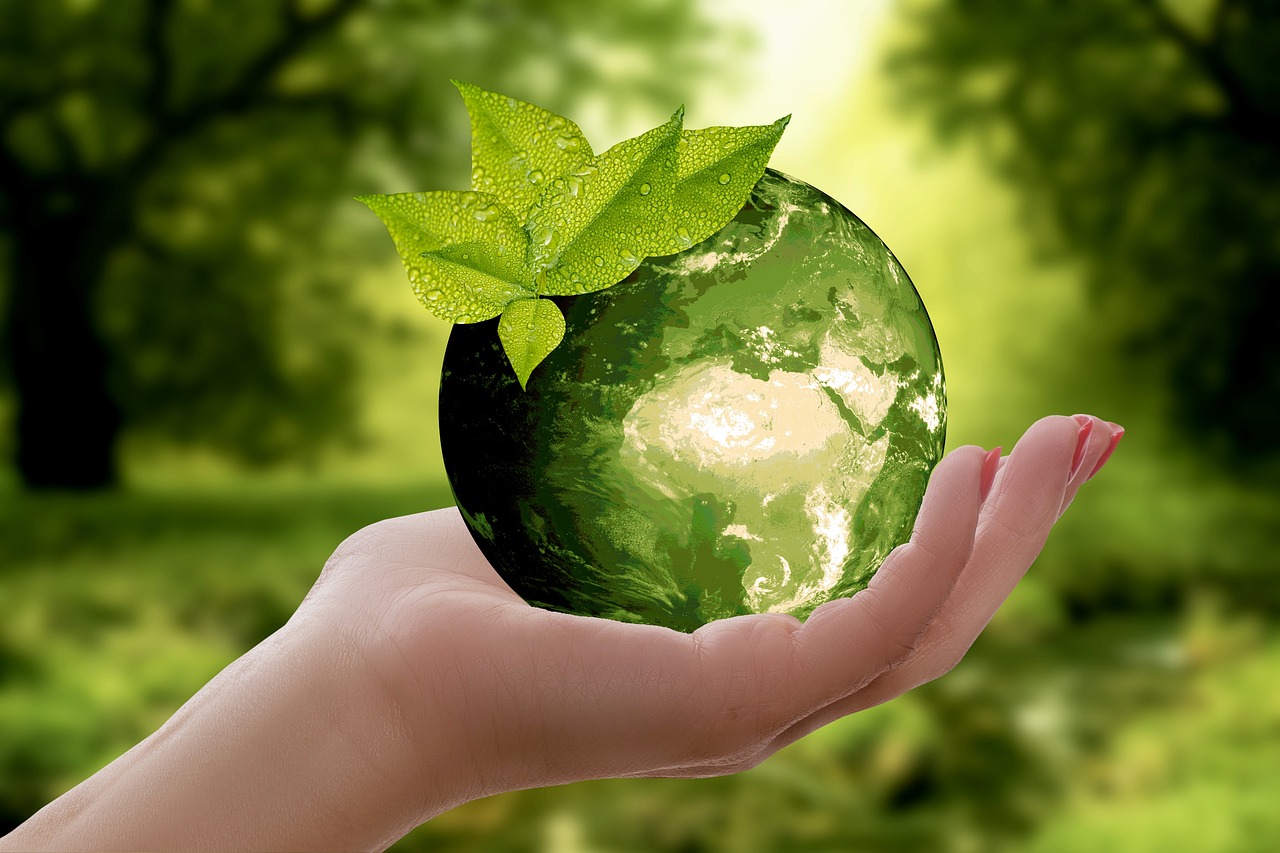
Golf, a sport often associated with pristine, manicured greens and lush landscapes, isn’t historically perceived as eco-friendly. However, with growing concerns about climate change and sustainability, the golf industry is steadily transitioning towards more sustainable practices. This article will explore how golf courses around the world are becoming greener and more eco-friendly while maintaining their appeal to golf enthusiasts.
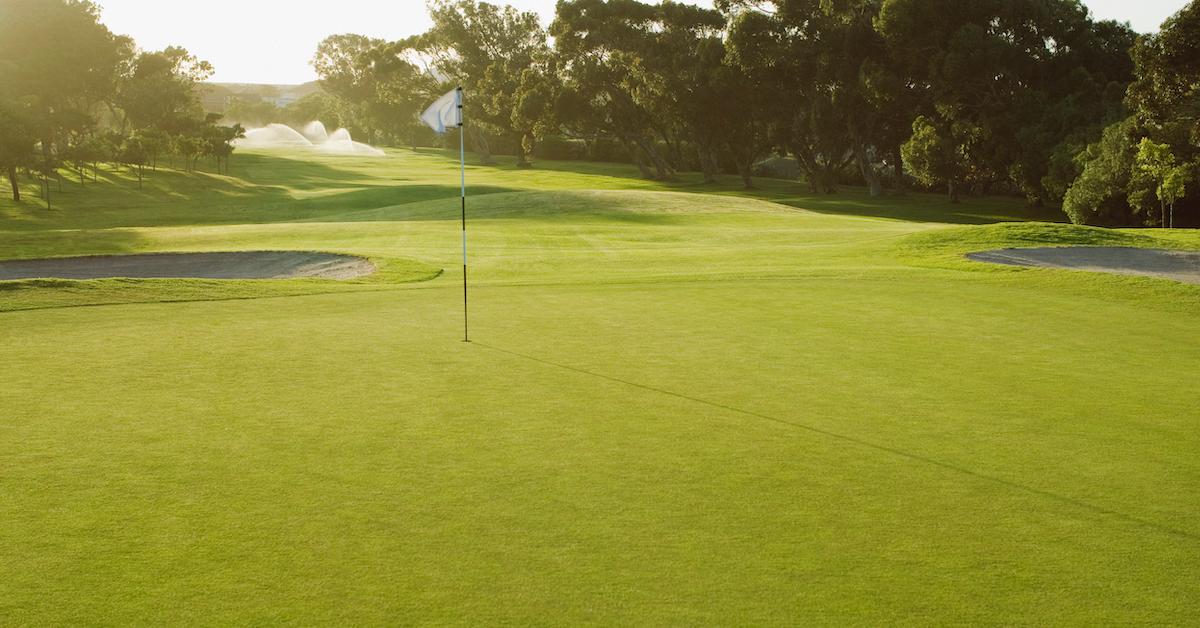
The Environmental Impact of Golf Courses
Golf courses traditionally use extensive resources, including water, pesticides, and fertilizers, which can have detrimental effects on the environment.
-
-
- Water Usage: Maintaining the verdant landscapes of a golf course requires enormous amounts of water. This is particularly concerning in regions where water scarcity is a significant issue.
- Pesticides and Fertilizers: To keep golf courses lush and free of pests, large amounts of chemicals are often used. These substances can seep into the ground, polluting water sources and harming local wildlife.
- Habitat Disruption: Golf courses often displace natural habitats, upsetting local ecosystems and reducing biodiversity.
-

Green Initiatives in Golf: Sustainability on the Fairways
Recognizing the environmental impact, many golf courses are now implementing sustainable practices to reduce their ecological footprint.

Water Conservation
Water conservation is a significant focus in eco-friendly golf course design. Methods employed include:
-
-
- Recycled Water: Many golf courses are now using recycled water or rainwater for irrigation, significantly reducing the use of freshwater resources.
- Drought-resistant Grass: Some courses are opting for drought-resistant varieties of grass that require less watering.
- Irrigation Technology: Advanced irrigation systems can efficiently distribute water, minimizing waste.
-
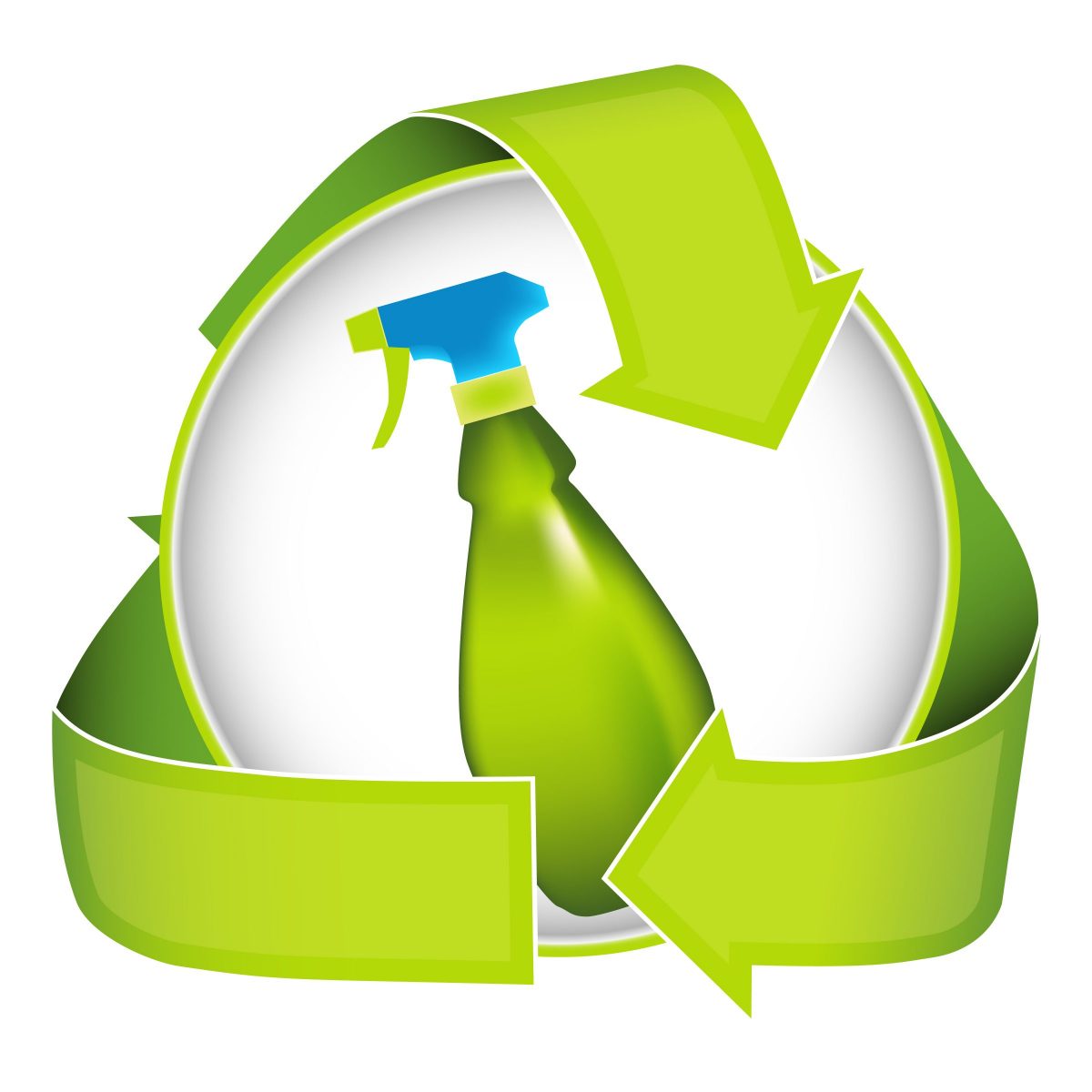
Reducing Chemical Usage
Reducing the use of harmful chemicals is another crucial step towards sustainability in golf. This can be achieved through:
-
-
- Organic Fertilizers and Pesticides: Many golf courses are switching to organic alternatives, which are less harmful to the environment.
- Integrated Pest Management: This approach focuses on long-term prevention of pests through biological control and habitat manipulation, reducing the need for chemical pesticides.
-

Preserving Local Habitats
Golf courses are increasingly being designed to coexist harmoniously with local ecosystems. This involves:
-
-
- Preserving Natural Features: Instead of altering the landscape to fit the course, designers are now incorporating existing natural features into the design.
- Creating Wildlife Habitats: Some golf courses are creating habitats for local wildlife, promoting biodiversity.
-
Case Studies: Sustainable Golf Courses Around the World
There are several golf courses worldwide that serve as excellent examples of sustainability in the industry.
- Pebble Beach Golf Links, USA: This renowned golf course uses recycled water for irrigation, reducing its freshwater use by 50%.
- St Andrews Links, Scotland: Known as the “Home of Golf”, St Andrews Links has implemented an extensive environmental management plan, including water conservation, habitat protection, and the use of organic fertilizers.
- Vineyard Golf Club, USA: This golf course in Massachusetts is one of the first to become fully organic, using only organic fertilizers and pesticides.
The Future of Sustainable Golf
The golf industry’s move towards sustainability is not just about eco-friendly practices on the course. It’s also about educating players and visitors about the importance of sustainability, thus promoting a culture of environmental consciousness.
While the transition to greener practices may be challenging, the benefits are immeasurable. Sustainable golf courses not only help protect the environment, but they can also enhance the playing experience, offering golfers the chance to play their favorite sport while surrounded by thriving, natural landscapes.
In conclusion, as awareness of environmental issues continues to grow, the question of “how green can the greens get?” is being answered by golf courses worldwide. Through innovative practices and a commitment to sustainability, the future of golf looks set to be greener than ever. As players, supporters, and enthusiasts of the sport, we can all contribute to this positive change by supporting golf courses that prioritize sustainability and by advocating for green practices within the golfing community.
Blog
The Golfer’s Holiday Hint-Dropping Guide
Your spouse thinks you want socks. You want a new driver. Here’s how to fix that.

Because subtlety is overrated when there’s a new driver on the line
Your spouse thinks you want socks.
Your kids think you want a tie.
Your mother-in-law is convinced you’d love another sweater with a reindeer on it, even though you’ve worn the last three exactly never, and everyone knows it, but somehow this year will be different.
It won’t be.
Here’s the problem. You want golf stuff. They don’t know what golf stuff means. You say “rangefinder” and they hear “robot finder.” You mention “premium golf balls” and they think all golf balls are the same, which is adorable but wrong, and you can’t exactly explain that without sounding like a crazy person who cares too much about dimple patterns.
So you need a strategy.
Not a subtle one either. Forget dropping hints like breadcrumbs. Drop them like anvils. We’re talking about a systematic campaign of suggestion, repetition, and strategic device-leaving that would make Madison Avenue jealous.
The Laptop Strategy (For the Tech-Savvy Golfer)
Leave your laptop open. Always. But not to just anything.
Open to golf retailer websites with items in your cart. Specific items. With the size, color, and model number clearly visible. And here’s the key – leave it open on the kitchen counter where your spouse makes coffee, because everyone looks at screens while waiting for coffee, it’s basically a law of physics at this point.
Do this for three weeks straight. Different items, same cart. They’ll get the message. And if they don’t, you’ve got a backup plan because you can just buy it yourself on December 26th when everything goes on sale.
The Casual Mention Method
This requires finesse.
Not too much though.
The goal is to work golf gifts into every conversation without seeming obsessed, which you are, but they don’t need to know that. Your daughter mentions her science project? “Speaking of projects, I’ve been thinking about upgrading my wedges.” Your son talks about his basketball shoes? “Funny you mention shoes – golf shoes with better traction would really help my game.” The mailman asks how you’re doing? “Great, though I’d be better with a new putter.”
Is this overkill? Maybe. Will it work? Absolutely.
The Magazine Massacre
Buy every golf magazine on the newsstand. Dog-ear the pages. Circle items in red pen. Write notes like “This would be perfect!” and “Honey, look at this one!” and leave them everywhere – the bathroom, the nightstand, the kitchen table, the car, their car, basically anywhere someone might sit for more than thirty seconds.
When they ask why there are seven golf magazines in the living room, just smile and say you’re “doing research.” Research for what? They won’t ask. They’re too busy looking at all those circled items with price tags helpfully highlighted.
The Strategic Screenshot
Text them screenshots. Daily.
“Look at this cool driver!” Send.
“These gloves are on sale!” Send.
“Remember when I mentioned wanting new golf shoes? These are the ones.” Send with three heart emojis because you’re not a monster, you still care about the relationship, you just also care about having the right equipment to shave three strokes off your game.
It’s called balance.
The Gift List That’s Not a Gift List
Create a shared note on your phone called “Gift Ideas” and fill it exclusively with golf items. When they ask what you want for Christmas, just say “Oh, I don’t know, I’m easy to shop for!” and then casually mention you made a little list of ideas, you know, just in case they needed inspiration, no pressure, but it’s organized by price range and includes links.
This works because you’re giving them exactly what they want – a clear shopping list – while maintaining the illusion that you’re being flexible. You’re not. But they don’t need to know that until after the presents are wrapped.
The Buddy System
Recruit your golf buddies. Have them “accidentally” call when your spouse is around. Make sure they loudly discuss the new equipment they just bought and how much it’s improved their game. Your spouse will hear. They’ll connect the dots. And if they don’t, have your buddy call again tomorrow. And the next day. Eventually, either your spouse will buy you golf stuff or they’ll buy you a different phone number, and honestly, both outcomes have their merits.
The Amazon Wish List Blitz
Create an Amazon wish list. Share it with everyone. Your spouse, your kids, your parents, your siblings, your coworkers, that guy you met at the driving range once, everyone.
Put forty items on it. Thirty-eight should be golf-related. The other two? A book and a candle, just so you seem reasonable and well-rounded, which you’re not, but again, they don’t need to know that.
Update it weekly. Add reviews in the comments like “Would really help my slice” or “These are the exact ones my pro recommended.” Make it impossible for them to buy anything else because everything else looks boring compared to golf equipment that promises to transform your game, which it might not, but the promise is what matters here.
The Direct Approach (For the Brave)
Just tell them.
Seriously.
Sit them down. Look them in the eyes. Say “I want golf stuff for Christmas. Specifically, I want this driver, these balls, and this rangefinder. Here are the links. Here are the specs. I’ve made it as easy as possible. Thank you for listening to my TED talk about my golf needs.”
Will they appreciate the honesty? Probably. Will you get what you want? More likely than if you kept hoping they’d telepathically understand that you need a new sand wedge because the grooves on your current one are worn down and it’s affecting your bunker play, which is already bad enough without equipment issues.
The Follow-Up Campaign
Don’t stop after dropping hints. Follow up. “Did you see that text I sent about the driver?” Ask during dinner. “Remember those golf shoes I mentioned?” Ask during breakfast. “Still thinking about that rangefinder.” Say it to no one in particular while watching TV.
Repetition is your friend. Marketing people know this. Politicians know this. Now you know this. Say it enough times and it stops being a hint and starts being a fact – you want golf stuff, they know you want golf stuff, and somewhere in the back of their mind, they’re starting to accept that golf stuff is happening this year.
The Backup Plan
Here’s the truth – they might still get it wrong. They might buy you golf-themed pajamas when you wanted golf balls. They might get you a gift card to a mini-golf place when you wanted a membership to a real course. They might wrap up golf socks, which are fine, but they’re not the GPS watch you’ve been talking about since July.
It’s okay. Say thank you. Mean it. Then on December 26th, hit those post-Christmas sales like a bargain hunter who knows exactly what they want and has been planning this shopping trip since Thanksgiving.
Because you have been.
And that’s fine. Golf equipment is expensive. If waiting one more day means you can get 40% off that driver you’ve been eyeing, that’s called being financially responsible. Your spouse will appreciate it. Eventually. After you explain why you needed three new wedges when you already have wedges.
“The grooves,” you’ll say.
They won’t understand.
But you’ll have new wedges.
The Real Gift
Look, here’s what matters. The holidays aren’t really about getting the perfect golf equipment, even though that would be nice, and you’ve spent considerable mental energy making sure everyone knows exactly what you want.
The holidays are about spending time with people you love. Even if they buy you reindeer sweaters. Even if they think all golf balls are the same. Even if they wrap up golf socks when you desperately need new grips for your irons.
They’re trying. That counts for something.
But also, leave your laptop open to that golf retailer website. Just in case. Because trying is good, but specific product links are better, and you didn’t make it this far in the season without having a solid Plan B.
Happy holidays. May your drives be long, your putts be true, and your gift-givers be observant enough to notice the forty-seven hints you’ve dropped since October.
And if all else fails?
There’s always next year.
Blog
Unveiling the History and Symbolism of Iconic Golf Trophies
Golf is a sport steeped in tradition, prestige, and class. From the lush greens of the course to the meticulously designed clubs, each aspect of the game exudes a sense of history and elegance.
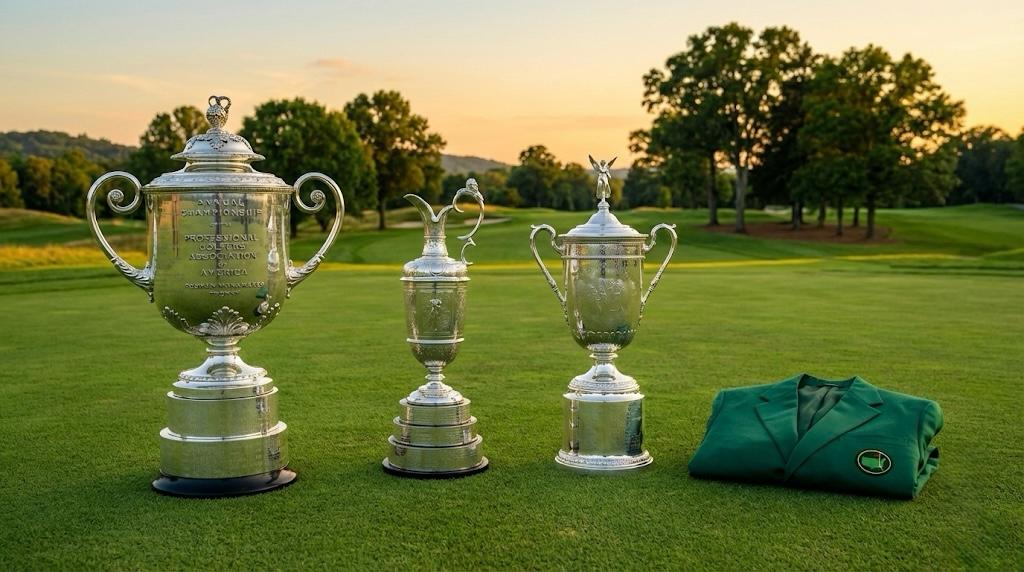
Golf is a sport steeped in tradition, prestige, and class. From the lush greens of the course to the meticulously designed clubs, each aspect of the game exudes a sense of history and elegance. Among these elements, golf trophies – the coveted prizes of the tournament – hold a special place. These iconic awards not only represent the winning golfer’s skill and determination but also carry a rich history and meaningful symbolism. In this article, we’ll delve into the story behind some of the most iconic golf trophies and what they symbolize, offering a unique perspective on this beloved sport.
The Claret Jug: The Open Championship
The Claret Jug, officially known as The Golf Champion Trophy, is awarded to the winner of The Open Championship, one of the four major championships in professional golf. The trophy, first presented in 1873, replaced the original prize of a red leather belt with silver buckle.
Its design is based on the medieval ‘claret jugs’ used to serve wine. The symbolism here lies in the association of the jug with a time-honored tradition, reflecting the essence of the tournament itself. The names of all the previous winners are inscribed on the jug, creating a tangible link to the history of the sport.
The Green Jacket: The Masters Tournament
At The Masters Tournament, one of the most prestigious events in golf, the winner is honored with a distinctive green jacket. The tradition began in 1937 when members of the Augusta National Golf Club wore green jackets to distinguish themselves from the crowd.
The symbolism of the Green Jacket is twofold. Firstly, it represents membership of an exclusive club, as only winners of The Masters or members of the Augusta National Golf Club are entitled to wear it. Secondly, the green color reflects the lush, pristine condition of the golf course, a crucial aspect of the sport.
The Wanamaker Trophy: PGA Championship
The Wanamaker Trophy, awarded to the winner of the PGA Championship, is named after Rodman Wanamaker, who played a significant role in establishing the Professional Golfers’ Association of America. It’s one of the largest trophies in professional golf, standing nearly 2.5 feet tall and weighing 27 pounds.
The size and weight of the Wanamaker Trophy symbolize the magnitude and prestige of the tournament it represents. Moreover, engraved on its silver surface are the names of past champions, honoring the legacy of the game.
The U.S. Open Trophy
The U.S. Open Trophy, awarded to the winner of the U.S. Open, dates back to 1895. The trophy was destroyed in a fire in 1946 and had to be recreated from photographs of the original.
The trophy is a sterling silver cup, adorned with elaborate ornamentation. The names of previous winners are engraved on the base, acknowledging the tournament’s rich history. The trophy represents the pinnacle of achievement in American golf, symbolizing the grit and determination required to prevail in one of the sport’s most challenging competitions.
Golf trophies are more than just symbols of individual triumph; they are embodiments of the rich history, tradition, and enduring spirit of the game. From the Claret Jug’s reflection of time-honored tradition to the Green Jacket’s symbolization of exclusivity and pristine golfing conditions, each trophy carries a unique story and meaning. These iconic awards, while coveted for their prestige, also serve as a timeless reminder of the sport’s enduring allure and the unforgettable moments that define golf history.
-

 Product Review6 years ago
Product Review6 years agoThe Perfect Practice Putting Mat Review by Jason Tenzer
-

 Blog4 years ago
Blog4 years agoLoophole Rule Offers PGA Tour Pros a Mulligan
-

 Blog4 years ago
Blog4 years ago2021 Buyer’s Guide: The Top 10 Value Golf Balls For Distance & Feel
-

 Blog5 years ago
Blog5 years agoGolf Marriage Counselor
-

 Blog6 years ago
Blog6 years ago9 Biggest Chokes Of The Past Decade
-

 Product Review6 years ago
Product Review6 years agoTHE ADJUSTABLE IRONS: WALKING STICKS GOLF CLUBS
-

 Blog4 years ago
Blog4 years agoWhat Your Golf Clubs Say About You
-

 Equipment6 years ago
Equipment6 years agoOHK Sports Interview by Jason Tenzer



























